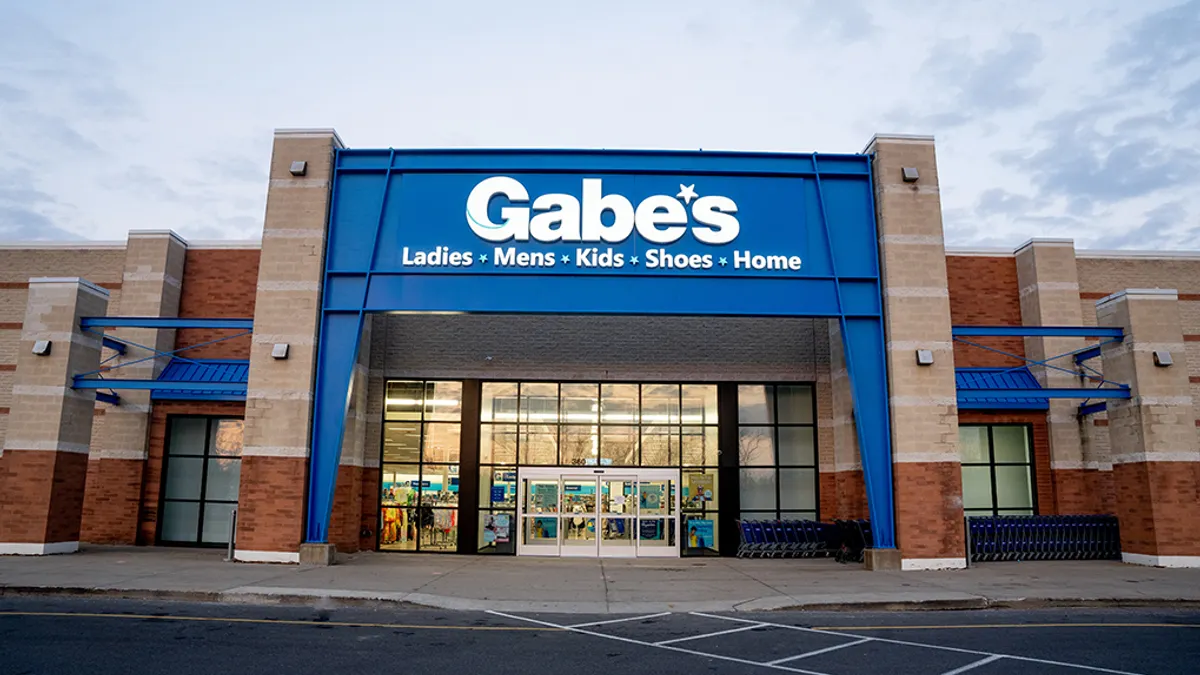Apparel retail, an industry segment that has been in turmoil since well before the pandemic, is poised for a reset as the pandemic shows signs of easing in the U.S.
Already, there are signs of hope: In March, clothing sales soared 105% year over year. Market intelligence platform Edited recently found that prices at the luxury end are actually rising and not just in streetwear. But apparel brands and retailers are grappling with many unknowns. The pandemic has probably entrenched consumers' already-building preference for less dressy attire and willingness to buy clothing online, so it's hard to judge how dressier apparel and brick-and-mortar stores will bounce back. In general, what styles and colors will match consumers' post-pandemic mood are still being worked out.
In order to anticipate new trends, match supply to demand and manage e-commerce's more complex logistics — especially difficult in apparel — technology may seem more important than ever. But the need for more human involvement may be even greater, apparel industry experts say.
"I will always promote data analysis because I'm into the numbers," Shawn Grain Carter, a Fashion Institute of Technology professor of fashion business management with decades of experience as a buyer, said by phone. "But the human factor will always matter. When we talk about fashion trends, an algorithm can't give a gut reaction, an algorithm can't go to Paris, London and Milan and say, 'Oh my God, I know this is perfect for my customer.' Because algorithms only rely on historical data and oftentimes you need to be able to use that sixth sense that you have as a merchant, that tells you this is a risk that's worth taking and I can calculate this risk and I'm going to go into it full throttle, and let the customer know this is a must-have item that you have to own for the season. That's why you need smart buyers and visionary merchants in retailing."
The risk
Data is integral to any business these days — certainly for an industry as complex as apparel — and today's AI and machine learning capabilities have reached impressive levels of efficiency and speed.
"We've always used data, that's nothing new," Carter said. "Historical data initially was done by hand, we used to keep what we called checkerboards. Then we were excited when Excel came along, we were excited when computers could give us a vendor analysis, and our gross margin analysis, and our markdown, then we were more excited with QR codes that could model stock replenishment. And now we're talking data insights, predictive analytics, markdown algorithms and machine learning. I can give you the data now faster than you got it 10 or 30 years ago, but you still need a human to interpret it, because if you interpret it wrong, you've messed up your volume, and your gross margin tanks."
Eliminating risk sounds ideal, but there's a danger in smoothing things over too well, several experts note. Trends, tastes and lifestyles are always in flux, perhaps even more so in the internet age, and hitting the mark in fashion often means taking a chance.
"The people with great fashion sense and intuition have been weeded out of the industry for a long, long time — ever since data became more important than intuition."

Lee Peterson
Executive Vice President, Thought Leadership & Marketing, WD Partners
"The fashion business, other than haute couture, for a long time has been driven by data and by data people — and lead by data people," Lee Peterson, executive vice president of thought leadership and marketing at WD Partners and a veteran of specialty apparel merchandising, said by phone. "They're giving you what you want efficiently. Speed, efficiency, quickness. They're showing you things based on what their algorithms tell them, and what they should put with what. And that's why so much fashion is boring because the intuition, and it's actually the risk, is gone out of the equation. The people with great fashion sense and intuition have been weeded out of the industry for a long, long time — ever since data became more important than intuition."
Commodity or fashion?
Still, a retailer can sell a lot of clothing leaning on data alone, as Walmart and Amazon consistently prove.
"The first question really is — are you saying that you're a fashion brand, or are you a commodity brand?" Peterson said. "Walmart, for example, says they do fashion, right? They don't really do fashion, they're selling commodities, they're selling known entities. They have data on what works, what doesn't work and they get it from their vendors, who would be the ones that take the risks. But if you're a fashion brand, you can't just rely on data. You can't."
These days, well designed algorithms are sophisticated enough to anticipate to some extent what a customer is more likely than not to purchase, according to Thomai Serdari, professor of luxury marketing and branding at New York University's Stern School of Business. But that's not the same thing as anticipating trends, which come and go, and in apparel generally tend to last for six to 10 years. Data is unreliable when it comes to knowing when a fashion moment has passed because it's rooted in the past, Serdari said by phone.
"Talented merchants don't just look at other fashion companies or how people shop, but they look at other areas of taste," she said. "Fashion is just one aspect, but taste encompasses everything, from what you eat and drink and what you watch and how you do your hair. All of these relates to each other and it's a very, very complex thing that happens outside of the computer, even if we do leave traces on the computer. There are a lot of cultural elements that are missed because it's impossible for the machine to have that sort of proactive behavior."
The pandemic has scrambled that further, and it will take a balance of tech and humans to navigate a time when fashion is top of mind in a way it hasn't been for a while, according to Tom Ott, former chief merchant of Saks Off 5th and general merchandise manager for men's at Saks Fifth Avenue, and founder of retail consultancy Retail and Fashion Solutions.
"We're entering a very strong fashion cycle," he said by phone. "The business is really exploding right now, and as people begin to travel, as people begin to go back to the office, as people begin to socialize, they're very much interested in fashion. We've probably seen a pivot in the business that we may have never seen in our lifetimes, going from replacement clothing and very casual apparel to a really fashionable time period. There's a need for a merchant to be out there, not just on the receiving end of line sheets. People need to be out and about, they need to be touching fabric. They need to be understanding fits. And the big critical piece that I think that's really missing a lot today is a clear understanding of the customer by region."
A Stitch in time?
There may be no greater confidence in algorithms' ability to sell apparel than what's found at Stitch Fix. The online apparel seller sends out regular boxes (or "fixes") of clothing curated by human stylists, based on algorithms that incorporate a style quiz, return rates and purchase information, and customer feedback.
"Our goal has always been to deliver the most personalized shopping experience to every client, and what has enabled us to do this so well is the nearly 10-year advantage we have building an algorithmically driven engine for highly personalized, apparel-based shopping," Elizabeth Spaulding, a former business consultant and now president of the company who is set to take founder Katrina Lake's spot as CEO, told analysts at the end of last year, according to a Motley Fool transcript of the company's first quarter earnings call.
Even Stitch Fix understands the value of the human touch, as executives often tout the contribution of real-life stylists in curating boxes and nurturing the customer relationship. As of January this year, the company boasts 3.9 million active customers and 5,800 stylists, or about 672 customers per stylist.
Ryen Anderson, the company's director of men's apparel design, says he finds "inspiration from street style, traveling and themes from global cities and runways" and keeps "up to date with what people are searching for online, what our clients are seeing on social media from influencers they follow, and even the fabrics our vendors are introducing."
In addition to completing a quiz at sign-up, which asks about size as well as fit and style preferences, customers let stylists know if they need items for a return to work or a vacation. "We also make it easy for clients to share useful, actionable feedback with us across fit, style, price and quality at checkout — and more than 85% do," Anderson said by email. "All of these data points help us understand whether we should buy more of an item or find similar items at a different price point, or adjust the hem on a pair of jeans."
There are some signs of trouble at the e-retailer, however, aside from the founder's departure as chief executive. Stitch Fix is moving beyond its inaugural model, where customers pay $20 per box, which arrives as often as every couple of weeks or as seldom as every three months. (That goes toward their order if they keep something, but is forfeited to Stitch Fix for "styling services" if they don't.) The company is now developing more open-ended ways for subscribers to shop on its site directly, closer to a traditional e-commerce site.
Rather than stylists, the company may have considered hiring influencers, according to Ilse Metchek, president of the California Fashion Association.
"They should have created their own influencers, and then stuffed the merchandise in the boxes based on what the influencers told their customers to buy," she said by phone. "They're behind the curve on that one because that train has left the station. There's too many influencers now. Now we're into micro-influencers."
Managing risk
In a fundamental way, a fashion brand serves as its own influencer or stylist. Fans return to it because their taste matches the aesthetic, and expectations have been set around quality and price.
"Risk is brand specific," Jeff Sward, founding partner and CEO at Merchandising Metrics, said by email. "Risk is also customer specific. What would be high risk at the Gap might be moderate risk at Urban Outfitters. What would be moderate risk at Lily Pulitzer would be outlandish at Donna Karan."
Merchants at such brands are more likely to gain traction with garments that be a surprise or departure, as long as they are true to the brand's story. But even a more daring brand often has a core commodity offer that is less daring, and whose development may be more informed by data.
"The ideal assortment, even for a fashion business, is in the shape of a triangle," said Peterson, who was a merchant at The Limited for years. The largest swath, at the bottom, sustains profitability. "In order to experiment with the top, you have to have the bottom on board. So that commodity business for women's was always sweaters, and then later on, bottoms and sweaters, because we had the data that told us what sold with what. If you don't solve that base, it's really difficult to just circle around and do nothing but test things to fail."
Sward similarly denotes four types of apparel merchandise by ascending level of risk: basics, key items, trends and forward fashion. A retailer seeing a lot of returns might "just skew to lower overall risk," he said. "That thinking is what got the Gap into so much trouble. They couldn't figure out how to break down and manage risk."
What you don't know
Data collection can be key to that management, according to Sward. But Stitch Fix and the many other (mostly DTC) retailers that employ style quizzes may not understand their limits, according to FIT's Carter.
"People don't understand that you need open-ended questions on a quiz to allow the consumer to tell you exactly what's on their mind," she said. "When you give them nothing but closed-ended questions, you're going to get enough information for your data insights, but they won't tell you more meaningful insights. You send out quizzes, and they tell you these are my favorite colors, this is my style ... that stuff is so meaningless now because what you find is that most consumers have split personalities. Of course there are those consumers who are pretty traditional. But what you can't predict is —Yes, I'm conservative by day because I'm a bank clerk, I'm a teacher, I work in the dental office. But at night, I'm a crazy woman."
Metchek agrees and notes that, at the same time, traditional demographic information has also lost its meaning.
"Merchants at Macy's or Saks or Neiman's could give you chapter and verse about their customer — where they live, what they eat, what restaurant they go to, what movies they see, that's all part of demographics — you can't do that anymore. You cannot pigeonhole a millennial," she said by phone. "You know them by knowing who they listen to on the internet. You do it by their influencer. You do it by the school they go to, perhaps, or maybe the neighborhood, or maybe some other thing, but you can't do it by age, you can't even do it by what job they have."
Taste is more niche today, is how Serdari puts it. "And actually this is exactly the problem for the algorithm," she said. "You follow different influencers and you see what they do. Or if you're very much into cartoons, then that really influences everything that you do."
One of the best ways to get to know a customer has stood the test of time however, and that's running a store, because that's where human interaction, conversation and observation are possible, Metchek said. That's also something that Stitch Fix has said it will never do. Matching each location to its customers is also key. "The Nordstrom in Manhattan has totally different merchandise than the Nordstrom in Los Angeles. And that's where Macy's failed and J.C. Penney failed and is still failing, and why Bloomingdale's just closed its store at the beach in Santa Monica — because they continued to put in Bloomingdale's merchandise from New York," Metchek said.
Store interactions provide unique fodder for ideas, according to Serdari. "The salesperson may have observed other customers doing certain things or doing things differently," she said. "And she would suggest to me something based on her experience with others, which the algorithm cannot do necessarily."
Above all, what the great (human) merchants seem to realize is what a customer once bought or once liked is old news. And that the one data point that can never be fed to any algorithm is what the customer might want in the future.
"I've heard [former Gap and J. Crew CEO] Mickey Drexler say this a thousand times — they don't know what they don't know," Peterson said. "It's the old Henry Ford thing. 'If I were to ask my customers what they wanted, they would have told me a faster horse.' This is a classic art and science question, and what we're talking about now is the over-reliance on science. If that's what you want, you're going to send boring clothes to people who also don't want to take a risk. If you just want your straight up Banana Republican generic look, then data is fine."























